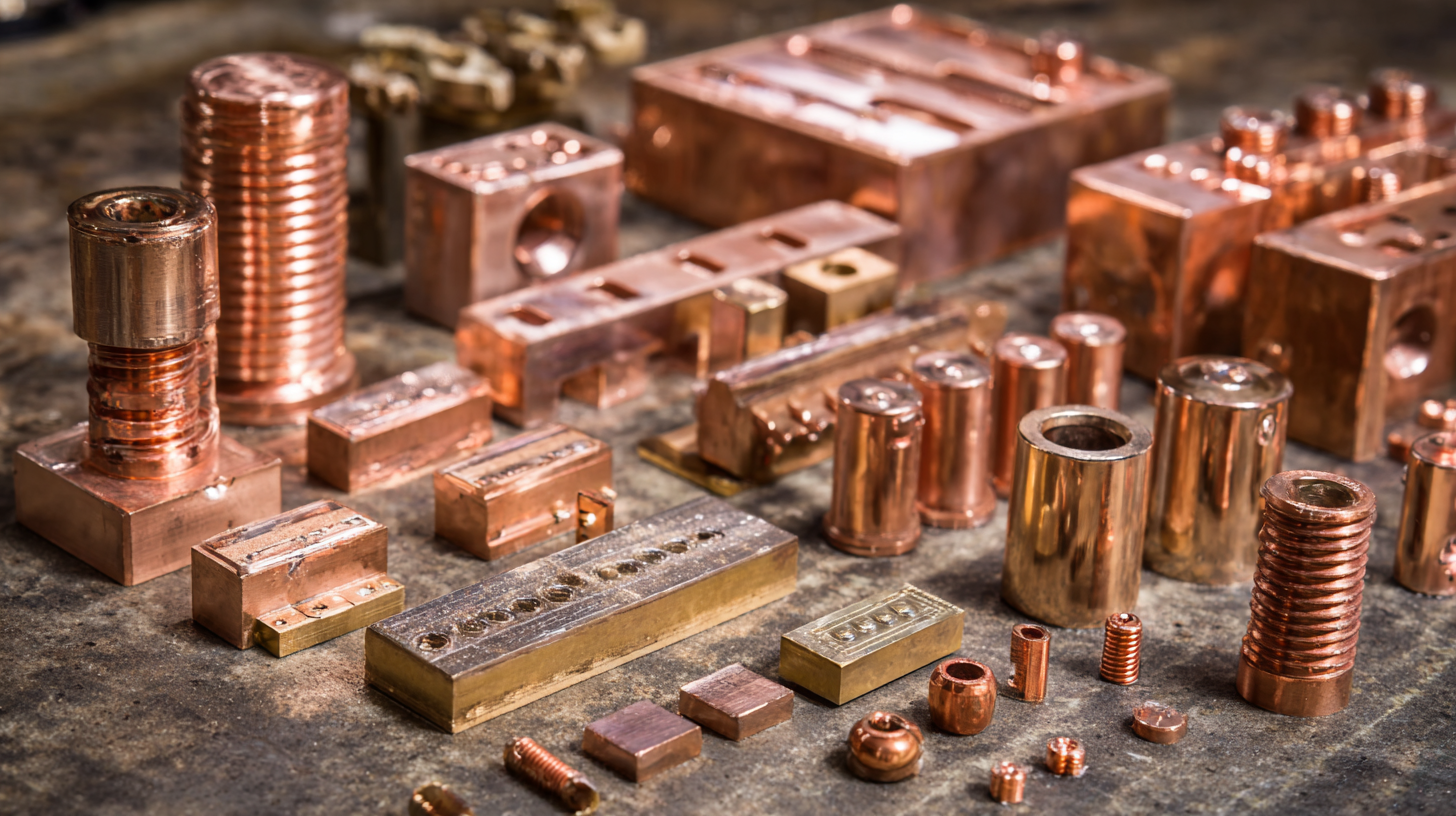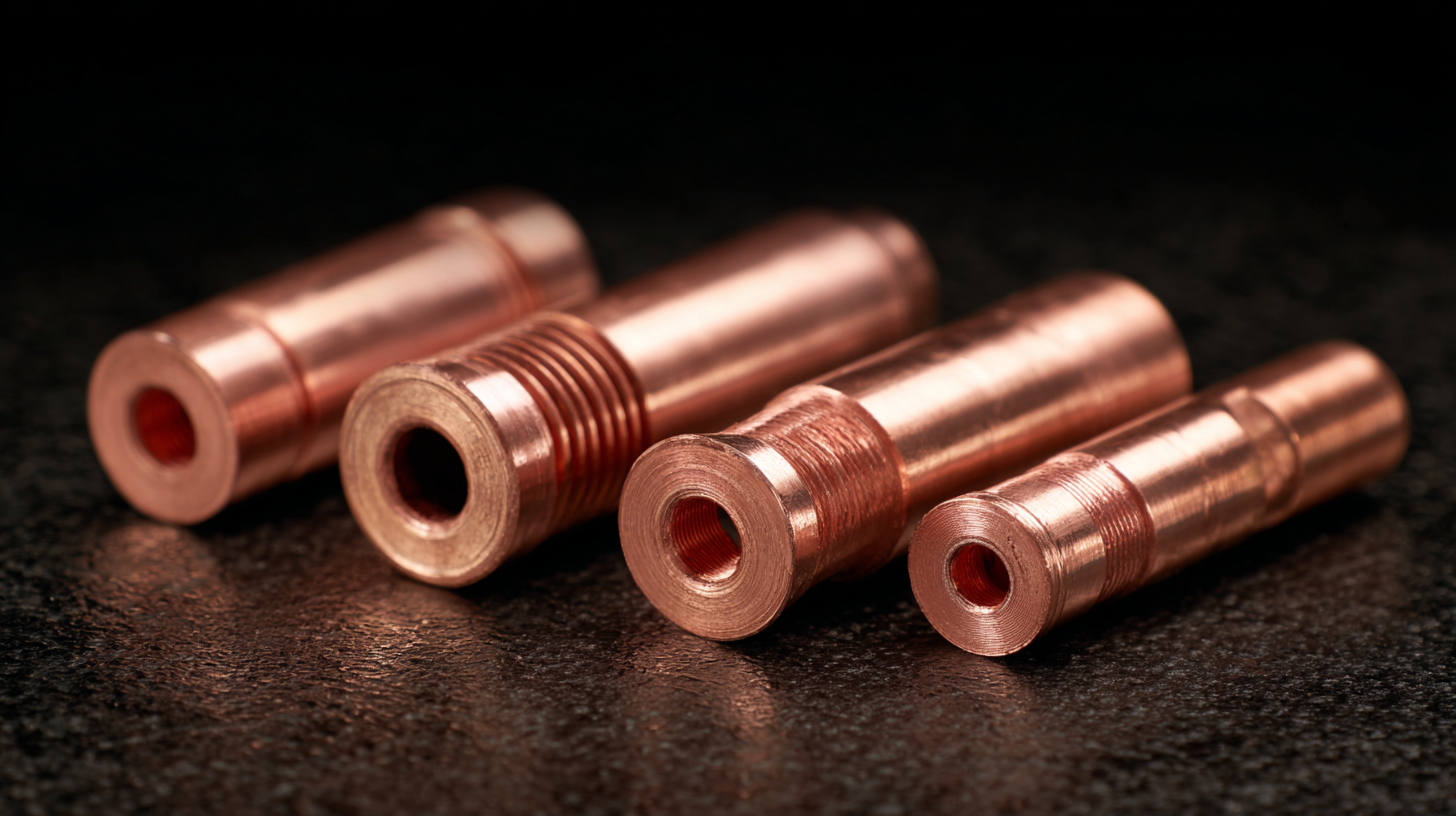In the ever-evolving landscape of electrical manufacturing, the demand for high-quality Electrical Copper Castings has surged, driven by their critical role in efficient electrical conductivity and reliability. According to a recent report by Grand View Research, the global copper market is projected to reach $4.3 billion by 2027, owing much of its growth to the burgeoning electronics industry.

Electrical Copper Castings are indispensable components in a myriad of applications, from power generation and transmission to telecommunications and consumer electronics. As manufacturers strive to enhance performance and reduce energy losses, ensuring the procurement of superior castings becomes paramount. This ultimate checklist aims to guide businesses in sourcing high-quality Electrical Copper Castings, emphasizing the benefits of meticulous selection processes that align with industry standards and improve overall operational efficacy.
High-quality electrical copper castings play a pivotal role in modern applications, particularly in industries that rely on the efficient transmission of electricity. As a highly conductive metal, copper is essential for manufacturing components like connectors, busbars, and rotors that demand robust performance under varying conditions. The significance of superior casting techniques cannot be overstated; they ensure that the copper components maintain consistency in conductivity, durability, and resistance to corrosion, ultimately leading to enhanced efficiency and reduced maintenance costs.
In addition to performance, the quality of electrical copper castings directly impacts the longevity and reliability of electrical systems. Poor-quality castings may lead to increased resistance, heat generation, and even failure in critical applications, compromising safety and functionality. Industries such as telecommunications, automotive, and renewable energy rely heavily on high-quality copper castings to enhance their operations, making the sourcing process crucial. By focusing on quality, manufacturers not only adhere to industry standards but also contribute to the overall sustainability and efficiency of electrical systems, aligning with the growing trend towards greener and more efficient technologies.
| Criteria | Description | Importance |
|---|---|---|
| Material Purity | High copper content with minimal impurities. | Ensures optimal electrical conductivity and durability. |
| Casting Techniques | Use of precision casting methods. | Reduces defects and improves dimensional accuracy. |
| Surface Finish | Smooth and clean finish without oxidation. | Enhances aesthetics and reduces resistance. |
| Testing Standards | Compliance with industry testing standards. | Ensures reliability and safety in applications. |
| Supplier Reputation | Established history of quality manufacturing. | Gives confidence in sourcing decisions. |
| Cost vs Quality | Balance between cost and high-quality materials. | Avoids hidden costs in quality failures. |
 When sourcing copper castings for electrical applications, several key factors must be considered to ensure you receive high-quality materials. First, understanding the alloy composition is crucial. Different copper alloys exhibit varying levels of conductivity, ductility, and strength. Ensure that the supplier provides detailed specifications about the alloy to match your project's requirements.
When sourcing copper castings for electrical applications, several key factors must be considered to ensure you receive high-quality materials. First, understanding the alloy composition is crucial. Different copper alloys exhibit varying levels of conductivity, ductility, and strength. Ensure that the supplier provides detailed specifications about the alloy to match your project's requirements.
Another important factor is the manufacturing process. Techniques such as sand casting, die casting, or investment casting can significantly affect the quality of the final product. Pay attention to the foundry's capabilities and certifications to ensure they meet industry standards. A reliable supplier should offer transparency about their production methods and quality control measures.
Tips: Always request samples before finalizing your order to verify the quality of the castings. Additionally, consider the supplier's lead times and their ability to accommodate any changes in your order. Finally, building a strong relationship with your supplier can lead to better communication and more reliable services in the long run.
When sourcing high-quality electrical copper castings, identifying reliable suppliers is crucial. The market is predominantly dominated by major companies renowned for their mining and production capabilities. Notably, the leading copper-producing companies play a significant role in ensuring the availability of high-grade copper essential for electrical applications. Industry reports indicate that these companies contribute significantly to the global copper supply, enabling the production of castings that meet stringent industry standards.
To ensure you are sourcing from the best suppliers, consider the following tips:
When evaluating the quality of electrical copper castings, the first aspect to consider is the material's purity.
 High-quality copper castings should predominantly contain copper with minimal impurities. This is essential because impurities can negatively affect conductivity and overall performance.
To ensure you are sourcing pure copper, request detailed material certifications and conduct spectral analysis if necessary. This will help in filtering out suppliers who compromise on material integrity.
High-quality copper castings should predominantly contain copper with minimal impurities. This is essential because impurities can negatively affect conductivity and overall performance.
To ensure you are sourcing pure copper, request detailed material certifications and conduct spectral analysis if necessary. This will help in filtering out suppliers who compromise on material integrity.
Another critical factor to assess is the casting process used. Different techniques, such as sand casting, die casting, and investment casting, yield varying results in terms of dimensional accuracy and surface finish. High-quality castings generally exhibit uniform wall thickness, minimal porosity, and smooth surfaces. It's advisable to inspect samples or request third-party evaluations to ensure that the casting method aligns with your specific requirements.
Understanding these characteristics will empower you to make informed decisions when sourcing electrical copper castings, ensuring that they meet the rigorous standards needed for optimal performance.
Sourcing high-quality electrical copper castings is critical for ensuring the durability and efficiency of electrical components. With the current challenges in copper recycling presented in recent studies, it is more important than ever to implement best practices for consistent quality. This begins with a thorough understanding of the recycling chain, from scrap generation to metallurgical recovery.
**Tip 1:** Establish strong partnerships with certified suppliers who prioritize transparency in their sourcing practices. As the market demands for recycled copper increase, ensuring your suppliers meet certain quality standards will help maintain the integrity of your products.
**Tip 2:** Regularly monitor the market for technological advancements in copper recycling. Innovations can often provide insights into improving material flow and recovery rates, which directly contribute to the quality of the copper you source.
Investing in sustainable practices and understanding the latest industry trends can create a competitive edge in sourcing high-quality copper. Engaging with peer discussions and panels can further enhance your knowledge of best practices, ensuring you're equipped to navigate the complexities of copper sourcing.
This bar chart illustrates the quality ratings of various sourced electrical copper castings based on key factors such as conductivity, purity, and casting consistency. These dimensions are essential for ensuring high-quality copper materials in manufacturing processes.
